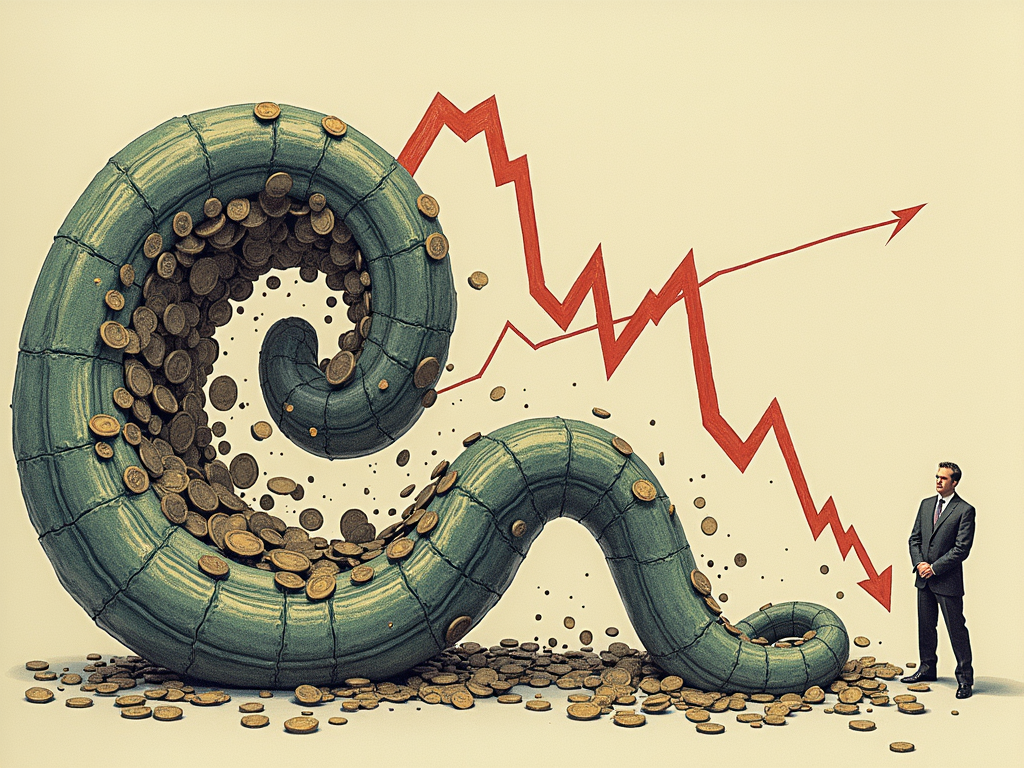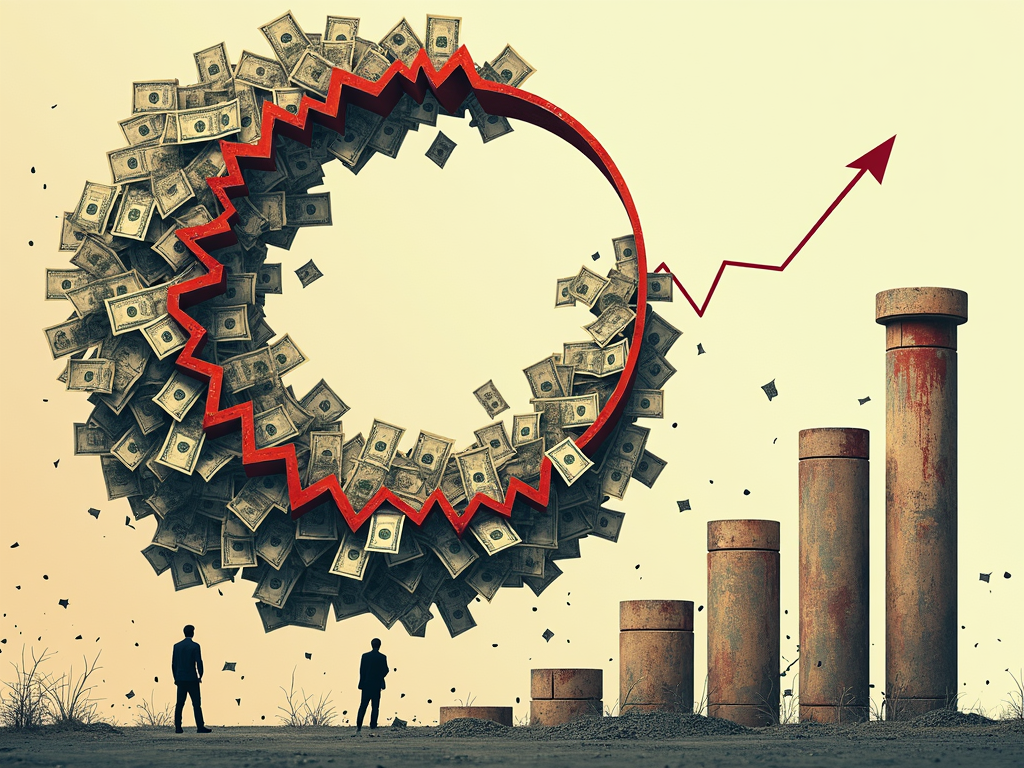Deflation, the phenomenon of falling prices, initially seems appealing: who wouldn’t be happy with cheaper products? However, for investors and private savers, deflation can prove to be a double-edged sword. While purchasing power increases, declining corporate profits and a stagnant economy can undermine returns. In this article, we will explore the complex consequences of deflation on the economy and provide insights on how investors can navigate wisely. The upcoming chapters will examine the causes and effects of deflation, as well as strategies for adapting to these economic conditions.
## The Complex Dynamics Behind Falling Prices: Causes and Consequences of Deflation

Deflation, the phenomenon of continuously falling prices, presents a series of economic challenges that go beyond mere price reductions. The causes of deflation are complex and interconnected, often influencing each other.
A key factor causing deflation is the **decline in the money supply**. This can occur if central banks adopt a restrictive monetary policy or if lending institutions behave restrictively in granting loans. Less money in circulation reduces purchasing power, leading to lower prices. At the same time, **productivity efficiency and technological advances** enable businesses to lower costs and often pass these savings on to consumers through lower prices.
Another critical factor contributing to deflation is the **decline in demand due to economic uncertainties**. In times of economic uncertainty, both consumers and businesses tend to cut back on spending and investment. This results in weak demand and, consequently, a decrease in prices. The **repayment of debt** also contributes to deflationary pressure, as paying off debts reduces available funds for consumption and investment.
Regarding the **consequences of deflation**, an ambivalent reality emerges. On one hand, the **purchasing power of consumers** increases, as the same amount of money can buy more goods. Even at the corporate level, efficiency improvements and cost reductions can have positive effects. However, the negative consequences usually outweigh the positives: businesses face significant **pressure**, as falling prices accompany unchanged fixed costs. This may lead to a cut in investments and, potentially, layoffs.
In addition, deflation frequently leads to a **downward economic cycle**. Consumers hesitate to make purchasing decisions while waiting for further price declines, which slows down the flow of money in the economy. Combined with a **growing real debt burden** due to the increasing value of money, the economic situation for debtors becomes increasingly difficult. All these cumulative factors can, in the absence of appropriate policy measures, lead to reduced growth or even a recession.
The discussion on deflation is raising increasing awareness both economically and politically about the need for various countermeasures to contain the potentially negative effects of prolonged falling prices on the economy and society as a whole.
## How Investors Exploit Opportunities and Minimize Risks During Deflationary Periods

In times of deflation, investors face the challenge of protecting their assets while seeking to capitalize on potential opportunities. Adapting investment strategies becomes crucial for succeeding in a period of falling prices. One fundamental strategy is portfolio diversification. By spreading their investments across different asset classes, such as stocks, bonds, real estate, and alternative investments, investors can reduce the risk of losses. Stocks of companies with stable cash flows and low debt represent a promising option, as they can better face the challenges of deflationary phases.
An understanding of deflation-resistant sectors can be advantageous. Sectors such as healthcare and utilities show relative independence from economic fluctuations and can offer stable returns in times of crisis. Consumer staples remain in demand despite falling prices, providing greater stability to companies in this sector.
Precious metals, especially gold, are considered safe investments in times of economic uncertainty. In addition to serving as protection against loss of value, they can maintain or even increase their value when prices are falling. Reliable are also sovereign bonds and government securities, which stand out during deflation for fixed returns and low risk.
Further considerations involve avoiding indebtedness. Since the value of debts increases during deflation, investors should reduce these to minimize the burden in view of the increasing purchasing power of money. It is essential to maintain a long-term focus, as deflationary phases are temporary, and long-term oriented investments often offer significant advantages.
Alternative investments such as private equity and hedge funds can represent interesting options during these periods, as they often operate beyond traditional markets. Finally, consulting with professionals is invaluable for developing tailored strategies that ensure both protection and growth opportunities. Investors who diversify wisely and target deflation-resistant sectors can achieve success even in challenging times.